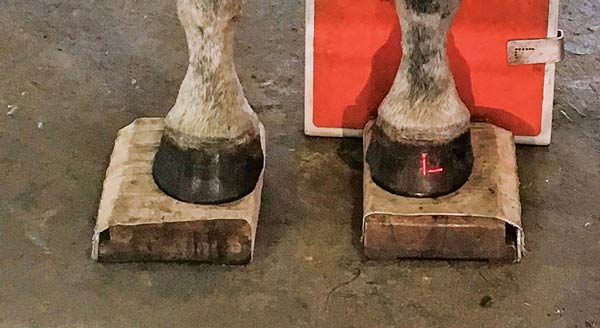American Farriers Journal
American Farriers Journal is the “hands-on” magazine for professional farriers, equine veterinarians and horse care product and service buyers.

One of the fascinating aspects of farriery are the different and interesting challenges that each day brings.
Equine veterinarian and farrier Scott Morrison delved into a number of cases, sharing helpful tips that can benefit the farrier during the Better Practices, Better Results Lecture, “Shoeing Strategies — Covering ‘Normal’ Through Pathologies,” sponsored by Kinetic Vet at the 2017 International Hoof-Care Summit in Cincinnati, Ohio.
The importance of good quality radiographs can’t be overstated when a farrier is using them as a blueprint for shoeing. Correctly positioning the horse is critical to achieving this.
A horse turning its head will create significant changes in joint spacing and can lead to poor quality radiographs.
Small, furniture felt pads can provide protection for sore areas on the sole while still utilizing a pour-in pad.
Stapling gutter guard to a synthetic shoe is helpful when a pour-in pad is necessary.
“You want the horse standing square and even on both blocks,” says the Lexington, Ky.-based Rood & Riddle Equine Hospital veterinarian. “Its head and whole body must be straight (Figure 1a) so you can get a good read on joint spacing (Figure 1b). You can see that joint space in the distal interphalangeal, or coffin joint, is fairly even medial to lateral.”
Just how important is the horse’s head position to achieving a good quality radiograph? It’s significant as it relates to joint spacing.
“When we turn the horse’s head to one side (Figure 2a), you can see…